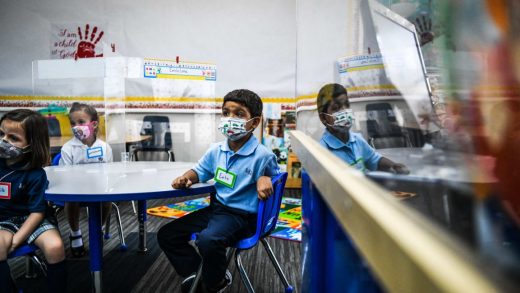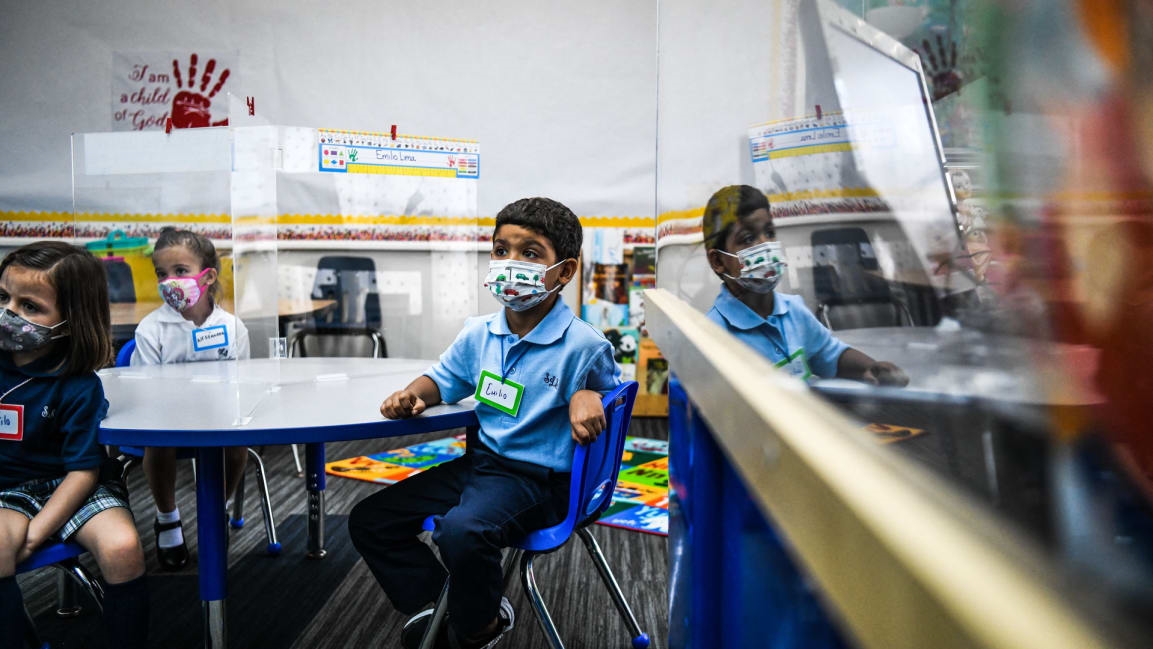Why we’re still waiting on COVID-19 vaccines for kids
School is underway, and vaccines are still not available for children under 12 years of age. As a growing wave of kids are contracting COVID-19, many parents are wondering when they’ll be able to vaccinate them. The reason for the holdup is that Pfizer and Moderna are still conducting clinical trials for this age group. The data is taking longer to collect because the companies are still testing the right dosages for small children.
Since the beginning of the pandemic, 4.8 million children in the U.S. have tested positive for COVID-19, according to data from the American Academy of Pediatrics. The organization reports that 204,000 of those cases were added in the last week. For comparison, in the last week of July, there were 38,000 cases of COVID-19 among children. Children have barely returned to their classrooms and already cases are spiking.
Pfizer’s COVID-19 vaccine has been approved by the Food and Drug Administration (FDA) for individuals 16 years of age and older, though it can be administered to children as young as 12 years old under emergency use authorization. The company is currently conducting clinical trials for children between 6 months and 11 years, as is Moderna. In late July, the New York Times reported that the FDA asked Moderna and Pfizer to expand their trials to include a larger number of children than originally planned to ensure they are able to capture any rare side effects that may occur in the two months following injection. Of particular concern are myocarditis and pericarditis, two inflammatory conditions in and around the heart muscle.
Pfizer plans to have data from its 5- to 11-year-old cohort in September, the company told Fast Company. The company aims to have data for children between 2 and 5 years of age in late fall, with children 6 months to 2 years coming sometime after. Moderna did not respond to an inquiry about when it might share its clinical trial data for children. When the FDA will ultimately approve these vaccines for children is still an open-ended question.
“My sense is that we may not have a vaccine until winter, which is too bad because what’s about to happen is that you’re about to have a group of fully susceptible people all in one place with a highly contagious virus,” said Paul Offit, director of the Vaccine Education Center at Children’s Hospital of Philadelphia, in an interview with the American Medical Association (AMA). He says that the reason it will take longer to understand whether or not Pfizer and Moderna’s vaccines meet approval is that these companies have to figure out the appropriate dosing for young kids.
Since Pfizer’s original clinical trials included children ages 16 to 17, it was fairly easy to extend that data down to children 12 and older, because the dosing was the same, says Offit. But to ensure safety for younger children, Pfizer and Moderna have to essentially start their clinical trial from scratch to find the right dosing schedule. “Is it a 30 microgram dose, or is it 10 microgram dose? Is it a 20 microgram dose? . . . is it the same dosing interval?” asks Offit. “I know it’s frustrating, but most importantly you want to make sure it’s safe.”
Even with approval, it’s unclear how many children will ultimately get vaccines. Vaccination rates among children over 12 years old remain low. Not quite 35% of 12- to 15-year-olds have received both doses of Pfizer’s COVID-19 vaccine, while only 45% of 16- to 17-year-olds are fully vaccinated, according to CDC data. “You’re taking a needle and syringe, you’re injecting into the muscle a biological agent, which generally most people don’t understand particularly well, so it’s easy to see why they would be somewhat scared,” Offit told AMA’s head of experience Todd Unger.
While children have not made up the bulk of COVID cases so far, the virus is still able to spread to them. Children represent nearly 15% of the cumulative cases of COVID-19, and 400 children have died from the illness. Others have suffered long-term symptoms.
“Children usually have asymptomatic infection . . . then a month goes by, they’re no longer shedding virus anymore, they have antibodies in their blood stream, and they come in with high fever, evidence of lung disease, heart disease, liver disease, and a subset go on to become long haulers,” Offit said.
“We’re not going to get out of this pandemic until we vaccinate children,” he said.
(34)



